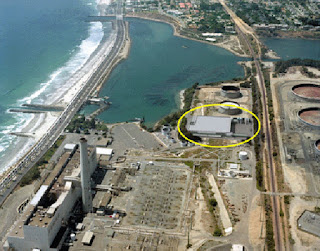Desalination: Water for a Thirsty World
The two desalination plants featured in this article, one in San
Diego, California, and one in Tel Aviv, Israel, represent the two largest of
these plants in the world. Desalination represents a part of the solution to
the world water crisis, along with wastewater treatment, and distributing water
filters to the poor, especially in 3rd world areas. Worldwide,
only 1 in 9 people have access to clean drinking water, Although Carlsbad and
Tel Aviv don’t represent the struggles with water scarcity in the third world,
they do represent solutions to the growing need for clean water in the world,
as a whole. Both plants use a technology called reverse osmosis as part of the
process.
The largest ocean desalination plant in the
Western Hemisphere is open in Carlsbad, San Diego, heralding what may be a new
era in U.S. water use.
"Global desalination output has tripled since 2000: 16,000 plants are up and running around the world, and the pace of construction is expected to increase while the technology continues to improve. Desalination is ripe for technological improvement. A combination of sensor-driven optimization and automation, energy-efficient technology that is said to nearly halve energy consumption, plus new types of membranes, could eventually allow for desalination plants that are half the size and use commensurately less energy. Among other benefits, small, mobile desalination units could be used in agricultural regions hundreds of miles away from the ocean, where demand for water is great and growing. Already, some 700 million people worldwide suffer from water scarcity, but that number is expected to swell to 1.8 billion in just 10 years. Some countries, like Israel, already rely heavily on desalination; more will follow suit."
"10 miles south of Tel Aviv, Israel, a vast new industrial facility hums around the clock. It is the world’s largest (larger than the Carlsbad plant) modern seawater desalination plant, providing 20 percent of the water consumed by the country’s households. Thanks to a series of engineering and materials advances, however, it produces clean water from the sea cheaply and at a scale never before achieved, demonstrating that seawater desalination can cost-effectively provide a substantial portion of a nation’s water supply."



